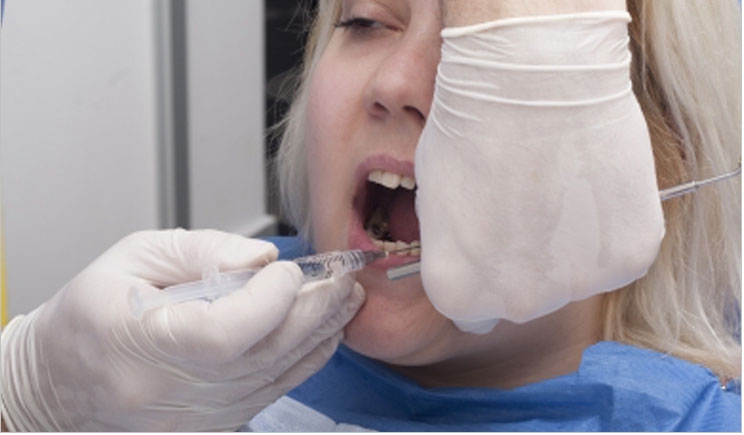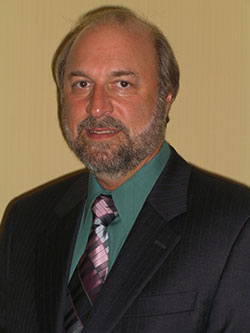
In a 1994 Quintessence International article, the authors asked 3,000 practicing dentists about their personal stress when administering local anesthetics to their patients. More than 24% of respondents indicated that the administration of local anesthetics is a significant cause of professional stress. (Source: Dentists troubled by the administration of anesthetic injections: long-term stresses and effects Simon, JF et al Quintessence Int.1994 Sept; 25(9) 641-646)
Unfortunately, unless you decide to become an orthodontist, we all need to use local anesthetics. When we look at leading patient fears, the top 2 are the needle and the feeling of prolonged numbness after going to the dentist. In pediatrics, dentists’ stress can rise even higher when we have to be concerned about children biting or chewing their tongues or lip for at least 30 to 45 minutes after treatment.
Since the late 1990s, dentistry has changed dramatically. The dental digital age has brought a wide array of new technologies, including social media, digital radiography, digital impressions and lasers. All are becoming necessities rather than luxuries. Lasers, in particular, have come to the forefront as major transformative tools for practices. They have fundamentally changed the way practices deliver patient care.
Lasers come in many sizes, wavelengths and methods for treating patents. We have dedicated soft tissue lasers whose wavelengths reside primarily from 810 nm to 1064 nm and one at 10,600 nm. We have cold lasers both in the visible and infrared light spectrum. We also have 2 specific dual hard and soft tissue lasers: the erbium family in the area of 2900 to 3000 nm and the newly developed isotropic carbon dioxide (CO2) laser operating at 9300 nm.
When the earlier lasers were introduced, many promises were made about how they would change dental care. Some were kept. Others failed to materialize in the real world. Erbium promised anesthetic-free restorative dentistry and originally was not developed for soft tissue surgery. Over time, however, erbium was found to be very useful for many surgical procedures. The major drawbacks to erbium were that it only produced anesthetic-free restorative procedures for the average dentist 30% to 50% of the time, and the laser did not deliver consistently good hemostasis for many excisional soft tissue procedures. Native CO2 lasers at 10,600 nm worked well, but were limited to soft tissue procedures.
In 2012, Convergent Dental introduced Solea, a modified (isotopic) CO2 dental laser at the 9.3 wavelength that my practice now utilizes. It can produce excellent hemostasis for soft tissue procedures and allows me to perform more than 95% of the restorative treatment I use it for without the need to give injections of local anesthesia.
In pediatric and general dentistry, dentists often decide to refer out all of their soft tissue surgical procedures, which essentially throws away significant procedure income. When using a CO2 laser at 9300 nm, there is a vast array of soft tissue treatments dentists could easily be doing within their own office practice.
Targets for laser soft tissue treatments include but are not limited to herpes labialis, aphthous ulcers, lingual frenectomies, labial frenectomies, mandibular frenectomies, and removal of fibromas, mucoceles and hemangiomas. Patients undergoing orthodontic care often require gingival recontouring or gingivectiomies after or during their orthodontic care and may need exposure of teeth prior to bracketing. Many of these soft tissue procedures can be completed using just topical anesthetics with a CO2 laser at 9300 nm.
Restorative dentistry can be completed without the need for any local anesthesia using a CO2 laser at 9300 nm for the vast majority of treatments, under rubber dam, using either a number 3 or 7 winged clamp. Solea, specifically, can produce reliable analgesia, which allows dentists to restore all classes of decay (class I-6) and still finish or modify the cavity preparation using a conventional dental handpiece if desired or necessary, without the need to numb the patient.
Since there is little or no need to use the local anesthetic, multiple quadrants can be completed without numbing the patient. For parents, this means not only less time away from work transporting their children to the dentist but also less time away from school.
An isotopic CO2 dental laser takes laser dentistry to a whole new level. It raises the bar and delivers what it promises. Lasers continue to change dentistry in ways we never thought possible and make dentistry less stressful for both the dentist and patient.
 Dr. Lawrence Kotlow is a board certified specialist in pediatric dentistry. He has been in private practice since 1974 in Albany, NY. Dr. Kotlow has written more than 30 articles and chapters in four textbooks, and he has spoken throughout the United States, France, England, Italy, Israel, Canada and Australia on pediatric dentistry, hard and soft tissue and photobiomodulating lasers, and the treatment of infants with breastfeeding problems due to tethered oral tissues. He has advanced proficiency in the use of erbium lasers and standard proficiency in diode and carbon dioxide lasers. He is one of 19 members of the academy of laser dentistry certified to give standard proficiency courses and has achieved mastership status at the Academy of laser dentistry. For more information, visit Kiddsteeth.com or contact him at kiddsteeth@aol.com.
Dr. Lawrence Kotlow is a board certified specialist in pediatric dentistry. He has been in private practice since 1974 in Albany, NY. Dr. Kotlow has written more than 30 articles and chapters in four textbooks, and he has spoken throughout the United States, France, England, Italy, Israel, Canada and Australia on pediatric dentistry, hard and soft tissue and photobiomodulating lasers, and the treatment of infants with breastfeeding problems due to tethered oral tissues. He has advanced proficiency in the use of erbium lasers and standard proficiency in diode and carbon dioxide lasers. He is one of 19 members of the academy of laser dentistry certified to give standard proficiency courses and has achieved mastership status at the Academy of laser dentistry. For more information, visit Kiddsteeth.com or contact him at kiddsteeth@aol.com.
Disclosure
Dr. Kotlow has been paid honoraria for providing teaching, consultation services and educational videos for both technology4medicine and Convergent Dental. He is an investor in the isotopic carbon dioxide laser, Solea, manufactured by Convergent and is on the company’s advisory committee. He has also provided consultations and advice to various laser related companies such as innovative optics in developing infant laser goggles and Serona, dental manufacturer of the CDR digital X-ray systems.











